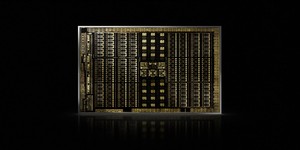Microsoft DirectX Raytracing API announced
March 19, 2018 | 17:00
Companies: #amd #microsoft #nvidia

At the Game Developers Conference (GDC) 2018, Microsoft has today unveiled a new API as part of the larger DirectX framework, DirectX Raytracing (DXR), with both Nvidia and AMD pledging their support - to one degree or another.
Ray-tracing is the process of tracing the path of light rays in digitally produced scenes in order to render highly realistic lighting and the consequent shadows, reflections, and refractions that are based on the light’s various reactions to the objects in its path and their material qualities. It has long been used in pre-rendered video to produce visually accurate special effects in post-production. This is great for the film and television industries, but for applications like gaming that are interactive and highly latency-sensitive, the extraordinary processing power required to accurately perform ray-tracing has traditionally been a big barrier and has led to a reliance on other rasterisation-based methods to simulate lighting in 3D environments. Today’s announcement is a big step towards changing that given how popular DirectX 12 is for new game developments.
Of course, API improvements are of little benefit without the hardware and drivers with which to utilise them. Starting with the green team, Nvidia has today announced Nvidia RTX, a ray-tracing technology said to bring ‘real-time, cinematic-quality rendering to content creators and game developers’ and which is the product of 10 years’ work in graphics algorithms and GPU architectures. Essentially, Nvidia’s next-generation Volta architecture consumer GPUs will feature RTX technology for ‘full’ i.e. hardware-level support for applications using Microsoft DXR, although exactly how this is enabled is yet to be disclosed. Support for DXR in older-generation hardware has not been confirmed, but we expect it to be software-level only.
‘Real-time ray tracing has been a dream of the graphics industry and game developers for decades, and Nvidia RTX is bringing it to life,’ said Tony Tamasi, senior vice president of content and technology at Nvidia. ‘GPUs are only now becoming powerful enough to deliver real-time ray tracing for gaming applications, and will usher in a new era of next-generation visuals.’
Nvidia has been busy introducing RTX to various industry partners, claiming already to have support from big names like 4A Games, Epic, Remedy Entertainment, and Unity, all of which are confirmed to be showing demos utilising the technology at GDC 2018.
‘Integrating Nvidia RTX into our Northlight engine was a relatively straightforward exercise,’ said Mikki Orrenmaa, technology team manager at Remedy Entertainment. ‘Developing exclusively on Nvidia RTX, we were surprised just how quickly we were able to prototype new lighting, reflection and ambient occlusion techniques, with significantly better visual fidelity than traditional rasterization techniques. We are really excited about what we can achieve in the future with the Nvidia RTX technology. Gamers are in for something special.’
Part of the Nvidia RTX announcement is GameWorks for Ray Tracing, whereby the Nvidia GameWorks SDK will be upgraded with a ray-tracing denoiser module, a suite of tools designed to enable game developers to leverage the abilities of the Microsoft DXR API and Nvidia RTX. It will be released later this quarter with support for ray-traced area shadows and ray-traced glossy reflections, while support for ray-traced ambient occlusion will follow later in summer.
AMD meanwhile, only had a short and rather vague statement prepared for the Microsoft announcement, which is repeated here verbatim: ‘AMD is collaborating with Microsoft to help define, refine and support the future of DirectX12 and ray tracing. AMD remains at the forefront of new programming model and application programming interface (API) innovation based on a forward-looking, system-level foundation for graphics programming. We’re looking forward to discussing with game developers their ideas and feedback related to PC-based ray tracing techniques for image quality, effects opportunities, and performance.’

MSI MPG Velox 100R Chassis Review
October 14 2021 | 15:04








Want to comment? Please log in.